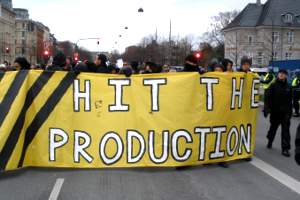 Is spectacle Copenhagen's only lasting legacy?
Is spectacle Copenhagen's only lasting legacy?
Between the aquarium of drowning-delegate sea-level rise protesters, the chicken flock of animal rights protesters, and the cocktail party of fur-coated protest protesters, there will certainly have been a lot to see these past two weeks in Copenhagen during the latest United Nations Framework Convention on Climate Change (UNFCCC). Unfortunately, however, spectacle may be the talks’ only lasting legacy. Rainforest advocates and tropical countries alike may have won a small victory with a deal to pay countries to keep their forests intact, and the U.S.’s pledge to raise $100 billion to help poor countries combat climate change is encouraging. Still, a binding resolution anywhere near the scope of the 1997 Kyoto Protocol seems a pipe dream as the talks come to a close by the 18th. It really makes you wish for the all-encompassing silver bullet solution that everybody can agree upon and painlessly enact.
The original silver bullet, of course, is exactly that: a bullet made of silver. An invaluable part of the standard monster-fighting arsenal, it can be used as needed against werewolves, vampires, and all manner of other ghouls. Ironically, however, society seems too sophisticated to accept even this original folkloric incarnation. Contrary to what you might remember from childhood, Twilight’s Edward says that vampires can only be killed by being shredded into pieces and burned. In Bram Stoker’s Dracula the protagonists decide that the only satisfactory way of killing one particular vampire is by driving a stake through its heart, followed by cutting off its head, followed by stuffing the dead mouth full of garlic.
Still, even if the silver bullet remains elusive, the alternative energy industry has no shortage of good ideas, many of which even come close to the ideal.
Nuclear power is closer to a silver bullet than perhaps any other single technology. Cold war memories of the Chernobyl and Three Mile Island reactor failures have dramatically colored American opinion on nuclear energy, and there may be legitimate global concerns about China’s exploding reactor industry. Nevertheless, nuclear fuel contains more than a million times more energy than gasoline gram-for-gram, a statistic that is hard to ignore, particularly if the proper safety measures are taken. France took note of this and now derives as much as 40 percent of its energy needs from nuclear plants. This is at least partly the reason why France emits only about one fourth as much carbon dioxide per capita as does the U.S.
